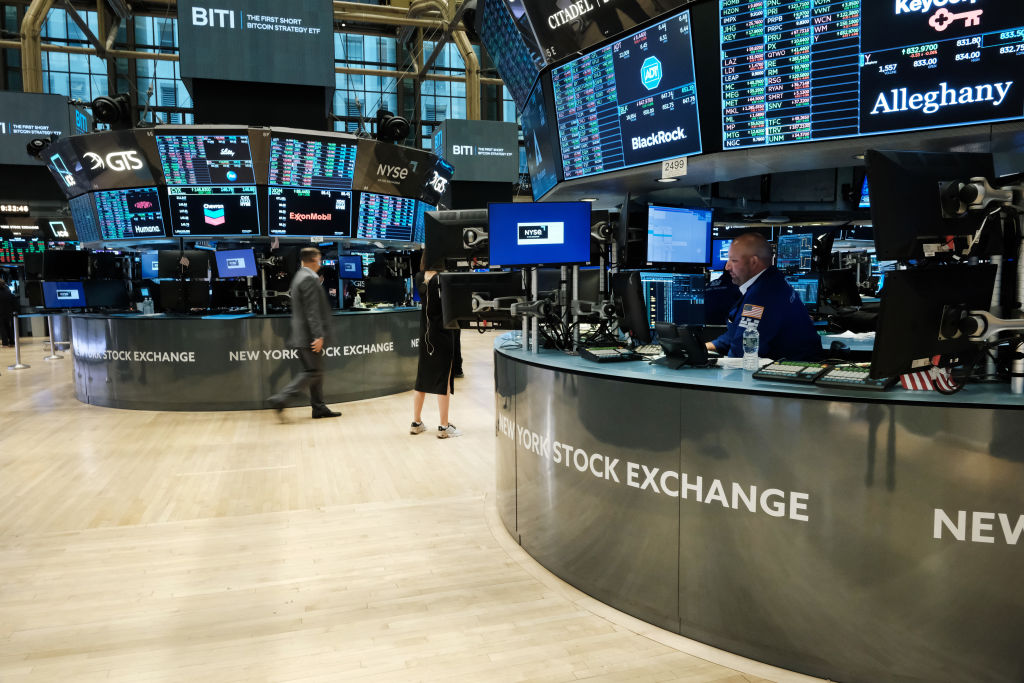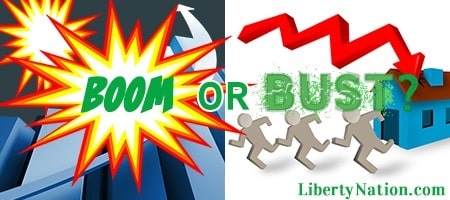If the typical investor had checked the Dow Jones Industrial Average, the Nasdaq Composite Index, or Brent crude futures at the July 5 closing bell, it would have seemed like a typical day in this bear market. However, for armchair traders and institutional investors who were parked in the trenches of the New York Stock Exchange or Robinhood app, it was like playing a pinball machine, watching a tennis match at Wimbledon, and listening to Ludwig van Beethoven’s Sonata No. 14 simultaneously. Only one word could describe what happened: Chaos.
A Summary of the Trading Day
At one point in the session, the Dow Jones cratered as much as 700 points, before settling the session down just 129 points. The S&P 500 edged up six points after sliding about 90 points. The tech-heavy Nasdaq advanced nearly 200 points, despite plummeting close to 400 points during intraday trading.
The selloff in commodities also dominated business headlines, with West Texas Intermediate (WTI) crude oil futures crashing more than 8% to below $100 a barrel. Brent, the international benchmark for oil prices, also plunged before erasing most of its losses on London’s ICE Futures exchange. The August natural gas futures’ drop was a more modest 2%, while heating oil prices declined as much as 9.8%.
Metals did not fare any better, with gold prices sliding under $1,770 per ounce and silver barely staying above $19 an ounce. Agricultural commodities slumped across the board, led by sharp declines in corn, soybeans, and wheat prices.

(Photo by Spencer Platt/Getty Images)
The only bright spot on the day was the greenback as the US Dollar Index (DXY) soared 1.59% to a 20-year high of 106.66. The buck has been on a tear this year, rallying nearly 11% on safe-haven demand amid swelling recession fears. The US Treasury market pared its losses and turned positive, with the benchmark 10-year yield up 1.8 basis points to 2.829%. At the same time, a key recession indicator flashed red on three separate occasions: the two- and ten-year yields inverted, meaning that the short-term rate was higher than the long-term. In other words, the market sentiment suggests the long-term outlook is bleak, and yields proffered by long-term debt instruments will continue to decrease.
Speaking of Recession
But why was Wall Street covered in red ink for most of the July 5 session anyway? Recession. Businesses, consumers, and investors have ostensibly accepted that elevated inflation is here to stay, so now they are looking ahead to an economic downturn as their primary fear. The “R” word has become the base case for many investment firms and economists. Or, at the very least, these parties have raised the odds of consecutive quarterly contractions by significant degrees.
Before the opening bell, brokerage firm Nomura sounded the alarm that the US and several other advanced economies would fall into a recession within the next 12 months amid monetary policy tightening. Rob Subbaraman, who is also head of global markets research, told CNBC that the chief objective for central banks everywhere is price stability, even if it means a sharp economic downturn.
 As Liberty Nation reported, the Federal Reserve Bank of Atlanta’s GDPNow model estimates that the US economy suffered a –2.1% growth rate in the second quarter. With the United States recording a 1.6% drop in the first quarter, this would mean the country is in the middle of a recession.
As Liberty Nation reported, the Federal Reserve Bank of Atlanta’s GDPNow model estimates that the US economy suffered a –2.1% growth rate in the second quarter. With the United States recording a 1.6% drop in the first quarter, this would mean the country is in the middle of a recession.
The union is in terrible shape right now. Stocks are in a bear market, energy prices are still stubbornly high, the nation is on the brink of a recession, scarcity of goods is the new normal, and rising interest rates will impact the poor and middle class. Indeed, it is a sad state of affairs when the only way to dismantle 40-year high inflation is by killing the economy because of the failures of Bidenomics and Powellflation.



